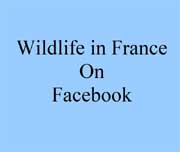Orsini’s Viper France


Orsini’s Viper
Vipera ursinii
Vipére d’Orsini
The Orsini’s viper has a maximum length of 50cm, colouration is grey, brown or olive green with a very boldly marked black zig zag pattern on the back which is completely joined up and solid. It has a rounded nose and eyes with vertically slit pupils.
It is found at altitudes of 900 to 2200 metres. In France it is only in Provence-Alpes-Côte d’Azur and extremely rare, in danger of extinction in the only three EU countries where it is present, France, Italy and Greece with IUCN red listing. It prefers open rocky habitats with some shrubby growth and sparse grasslands/pasture, very sensitive to disturbance and human activity. Most studies conclude that it is not aggressive and rarely bites humans, 9 times out of 10 if it does “strike” it keeps its mouth closed. When approached by humans it chooses either to remain completely still or flee slowly and silently.
Its prey is almost entirely grasshoppers, crickets and other insects, occasionally small mammals which it hunts primarily during the morning and early afternoon. Hibernation is from October until April/May.

Reproduction has been difficult to study in the wild. The Orsini’s viper is ovoviviparous(1) and the females cycle is essentially bi annual. Coupling takes place towards the end of May and between 3 and 8 young are born between the end of August and the end of September when they go straight into hibernation and do not eat until June the following year.
The following sites in France have been given Natura2000 status for this species.
FR9301530(2) |
04 |
CHEVAL BLANC - MONTAGNE DES BOULES - BARRE DES DOURBES(2) |
||
FR9301535(2) |
04 |
MONTAGNE DE VAL - HAUT - CLUES DE BARLES - CLUES DE VERDACHES(2) |
||
FR9301537 |
04 |
MONTAGNE DE LURE |
||
FR9301540(2) |
04 |
GORGES DE TREVANS - MONTDENIER - MOURRE DE CHANIER(2) |
||
FR9301545 |
04 |
VENTEROL - PIEGUT - GRAND VALLON |
||
FR9301547(2) |
04 |
GRAND COYER(2) |
||
FR9301570(2) |
06 |
PREALPES DE GRASSE(2) |
||
FR9301580 |
84 |
MONT VENTOUX |
It would appear that the principle problem for this snake is Human activities, roads, ski runs, tourism and theft by reptile dealers and collectors. It is also eaten by Short toed Eagles, Buzzards, Montagu’s Harriers and Ravens.
Level of protection. Habitats / Flora / Fauna Directives annexes 2 & 4 Berne convention annex 2, Washington convention annex 1, protected in France at the National level art1.




